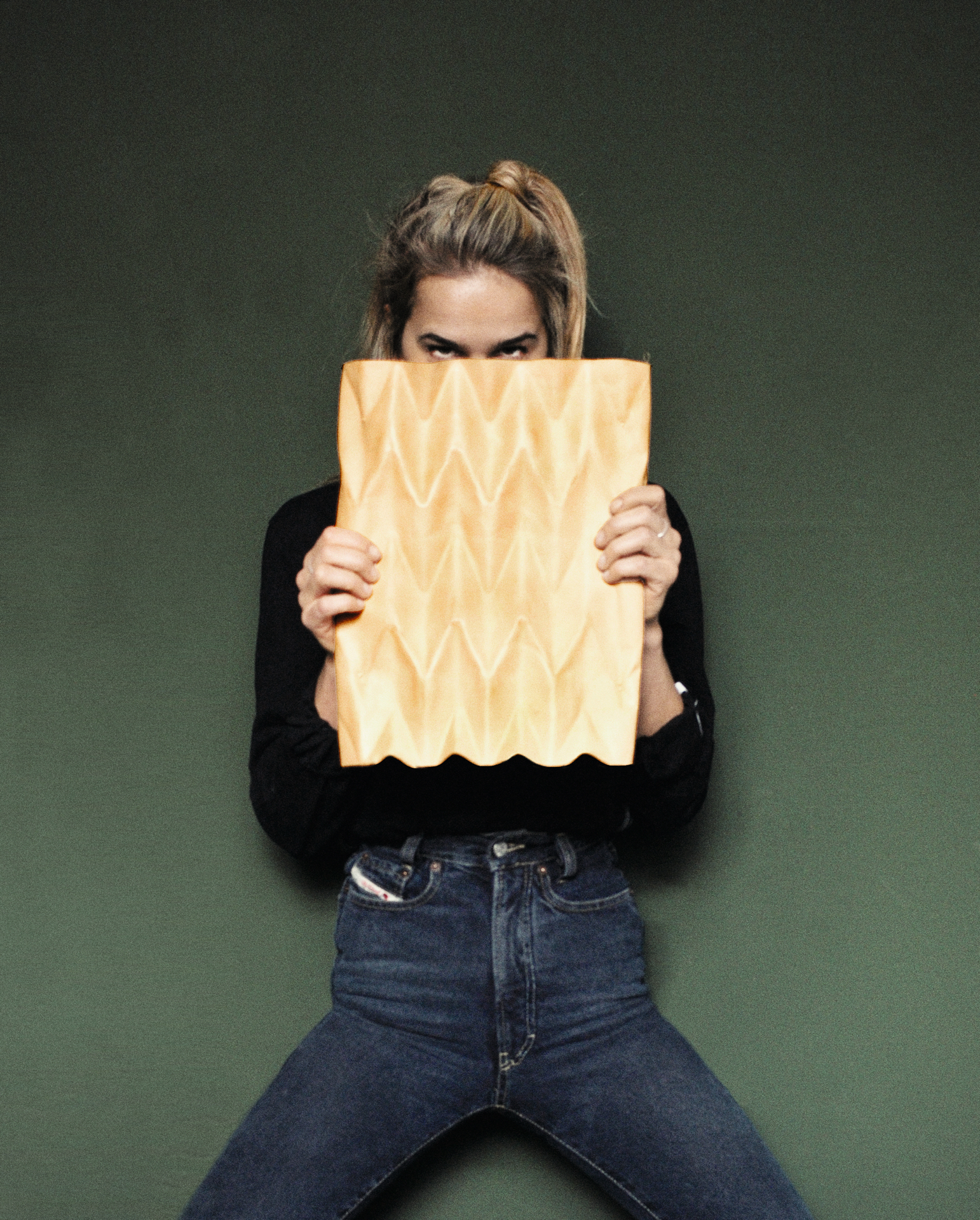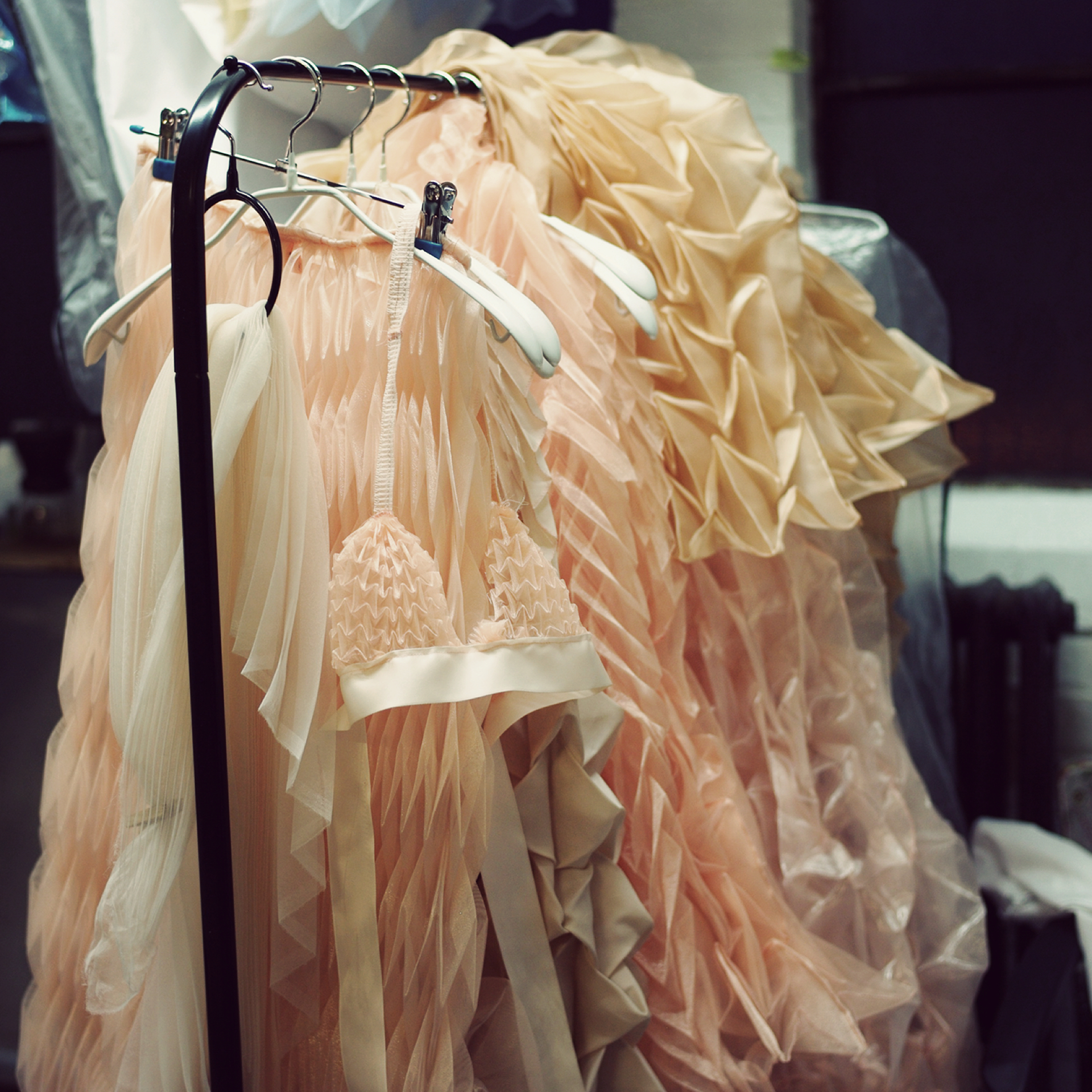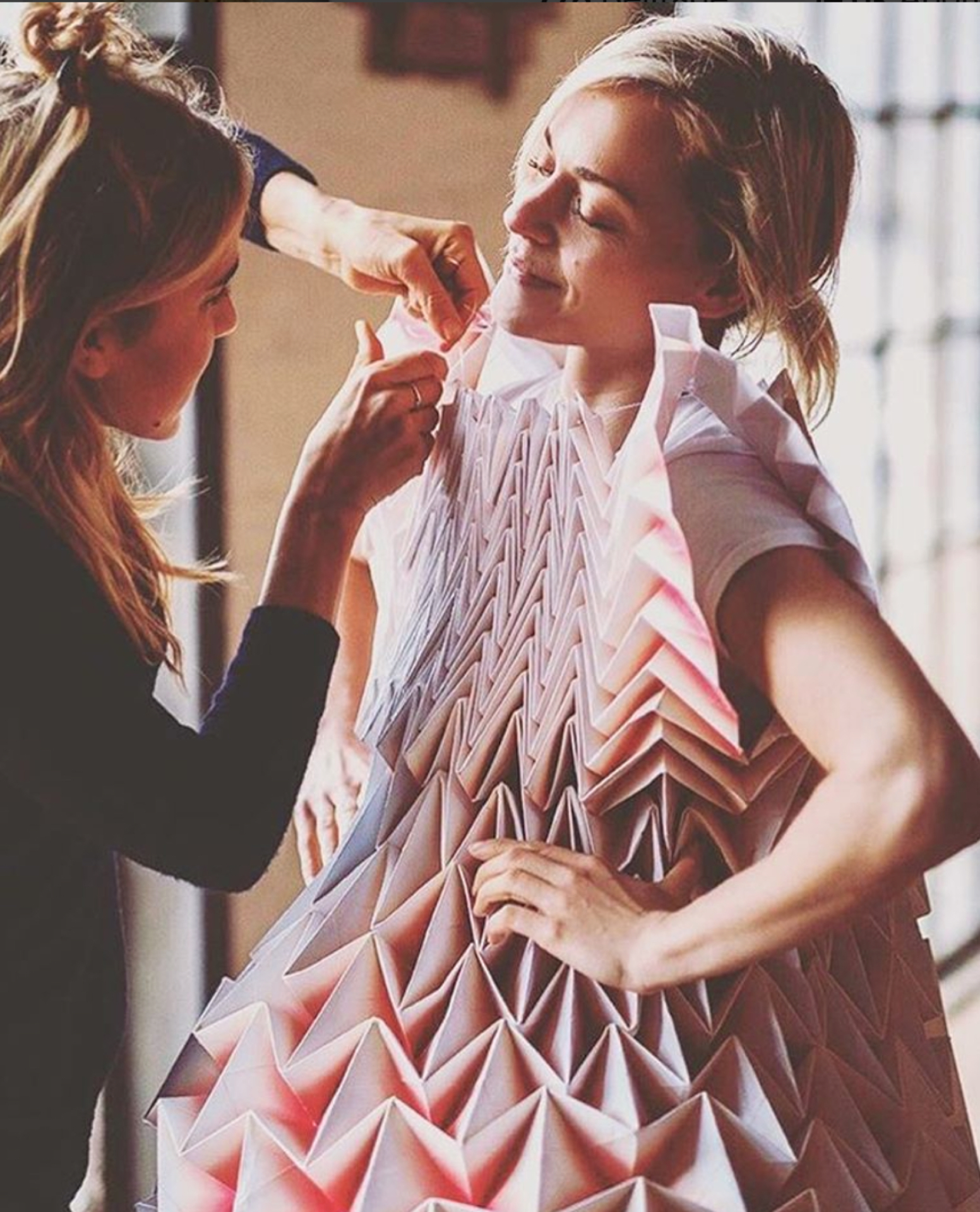Ms Waibel, What made you study at the Royal College of Art London?
I was in London for six months at the Royal College of Art on an Erasmus student exchange. I immediately fell in love with the city. My plan was to finish my bachelor’s degree in Germany and then realize my dream of studying in London and doing my master’s in the city’s brilliant institutions.
I really wanted to do my master’s because I felt the need to find my own style.
How did you discover your love of pleating?
At the beginning of my time in London I followed all the rules; every design had to have a function. Later on I realized that I wasn’t getting anywhere like that and started to rely more on my feeling – to just do more of what I felt like doing.
I tried out many different projects that were a bit more artistic, colourful and wild, and then at some point I started pleating, folding.
At the time we had a project called Minimum Maximum, and I just started to turn that into a pleating project. I then folded so much and tried different materials, from fabrics to paper. I folded shower curtains, pulling with a vacuum on a folded wooden shape that I created – so very creative and whacky. I just tried to study all kinds of folds and get on with it. I ended up with a huge folding archive. For my final project at the Royal College of Art, I made folding dresses out of paper that showed the movement, the transformation of the folds. And That’s where it all started. My final project made the rounds a bit in design circles and on the internet, and then it was shared on several design blogs. It was interesting for people. With that came the first commissions and then the unfolded universe took off.
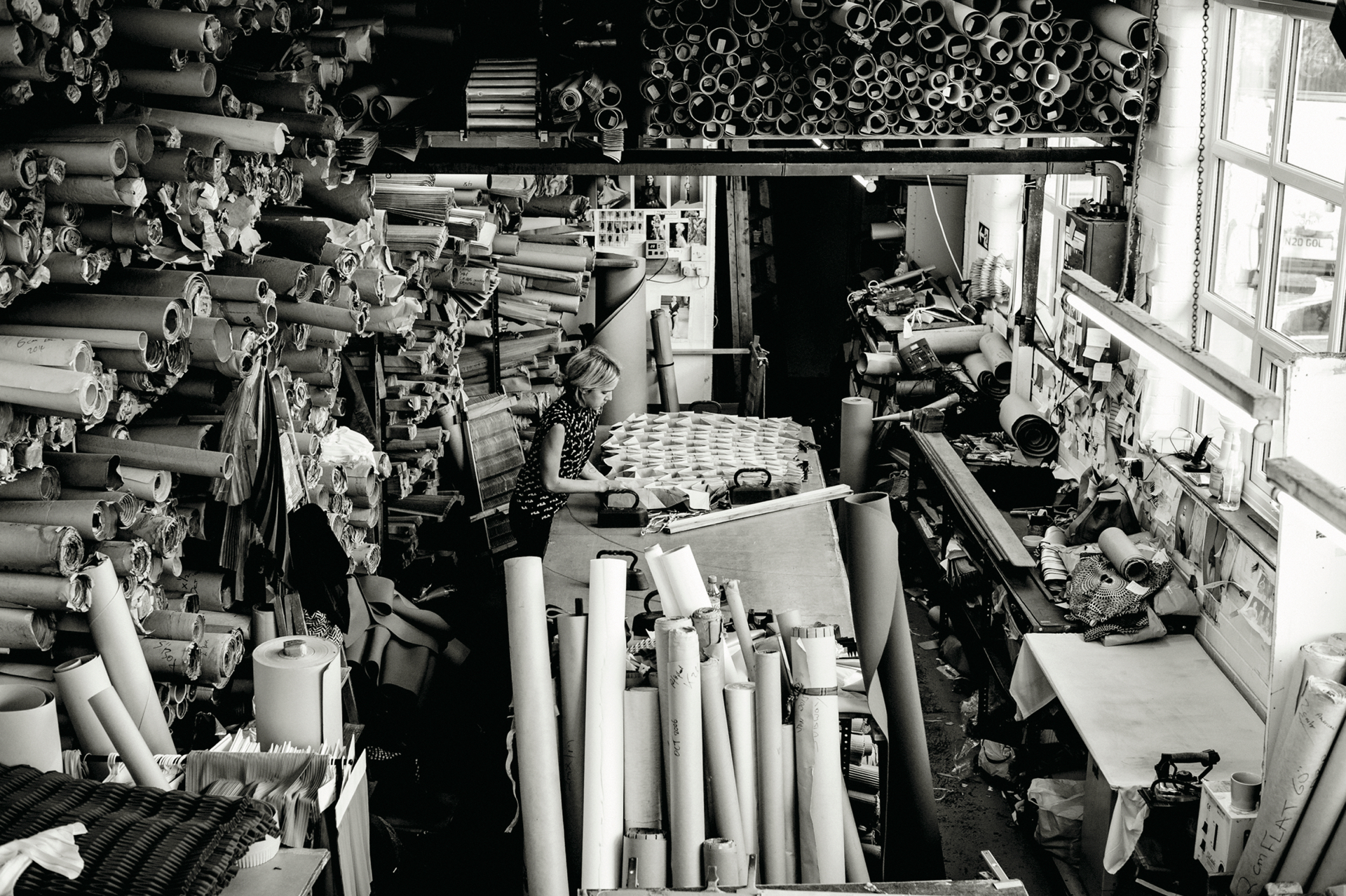
What does your unfolded universe mean to you?
The unfolded universe is my created world, my creativity, my folded world, which I find very exciting. There is just an endlessness for me there. Everything is folded in different ways, from carpets to furniture to ceramics to table service, and so are glasses, bottles and clothes. Everything is exciting, fun and beautiful to look at. Maybe one day there will be a shop where you can stroll in and really be in a folding world. That’s a bit of a dream of mine.
Watching your videos, it seems like you make the paper shapes for your products with ease. Is it really as easy as it looks?
The ease of folding, yes. It’s definitely there. Of course, you need a bit of craftsmanship and a certain dexterity, but luckily I have that. I taught myself everything through YouTube tutorials while I was studying in London. Funnily enough, my grandmother sent me a link to a tutorial, and I actually learned from it. She herself was also such a little folder, always folding boxes out of paper and giving them to us, origami style, with a bit of Christmas money. So, it’s a bit of a folding gene that I have. But I’ve never really projected that.
I’m actually a very impatient person, but I do have the patience for folding, oddly enough. I sit there for eight hours and fold slowly. And the process is so exciting that I just go along with it and know that in the end something beautiful will emerge. It’s very meditative, which is good for me.
At the end of the day it makes me a more relaxed person.
How long did it take you to get so good at making your own forms?
I learned it quite quickly, of course, through those YouTube tutorials. There were several attempts, and then it was all there, quite intuitive. When I make a folding pattern, it takes several hours and requires a lot of patience. Of course, it depends on how big and complex the shape is.
What advice do you have for giving the craft of mould-making a chance?
Creatives are important to give a craft like that new impetus and be inspire to work with new materials, so that something new can emerge. Personally, of course, I’m much better at giving ideas rather than making them. I could very well give instructions to a mould maker.
It’s also good to work with big companies. Folds are timeless, but the design language is also very, very future-oriented. There are opportunities in the car industry, for example, that could work with mould makers. Fortunately, there are no machines that can replace craftsmanship. There are simple folding shapes that can be done by machine. But for more complex shapes, you cannot substitute the hands, the craft. That means if folds remain really interesting and a trend – which I think they will because they’re timeless – then the art can never be replaced.
You combine craft and fashion design in one person. Is that an enrichment in the process for you or just a means to an end?
It’s natural. It comes from within, and it’s easy. It came about that way because it naturally makes sense. Well, I’ve always been very talented with my hands, and I like to create. Even when I was As a little child I had my mother’s sewing machine and made my own clothes. Rather crooked and wild, but I was very, very thoughtful with my own creations and so it was a bit like, “I’m going to be a fashion designer”. So fashion and design are definitely there, also product design. I am a designer but also a craftsperson and an artist – all in one – and that unites without labelling it. I am happy that I can do it and that there are people who want to see it. They enjoy my products and are inspired by them. That’s the main purpose and reason.
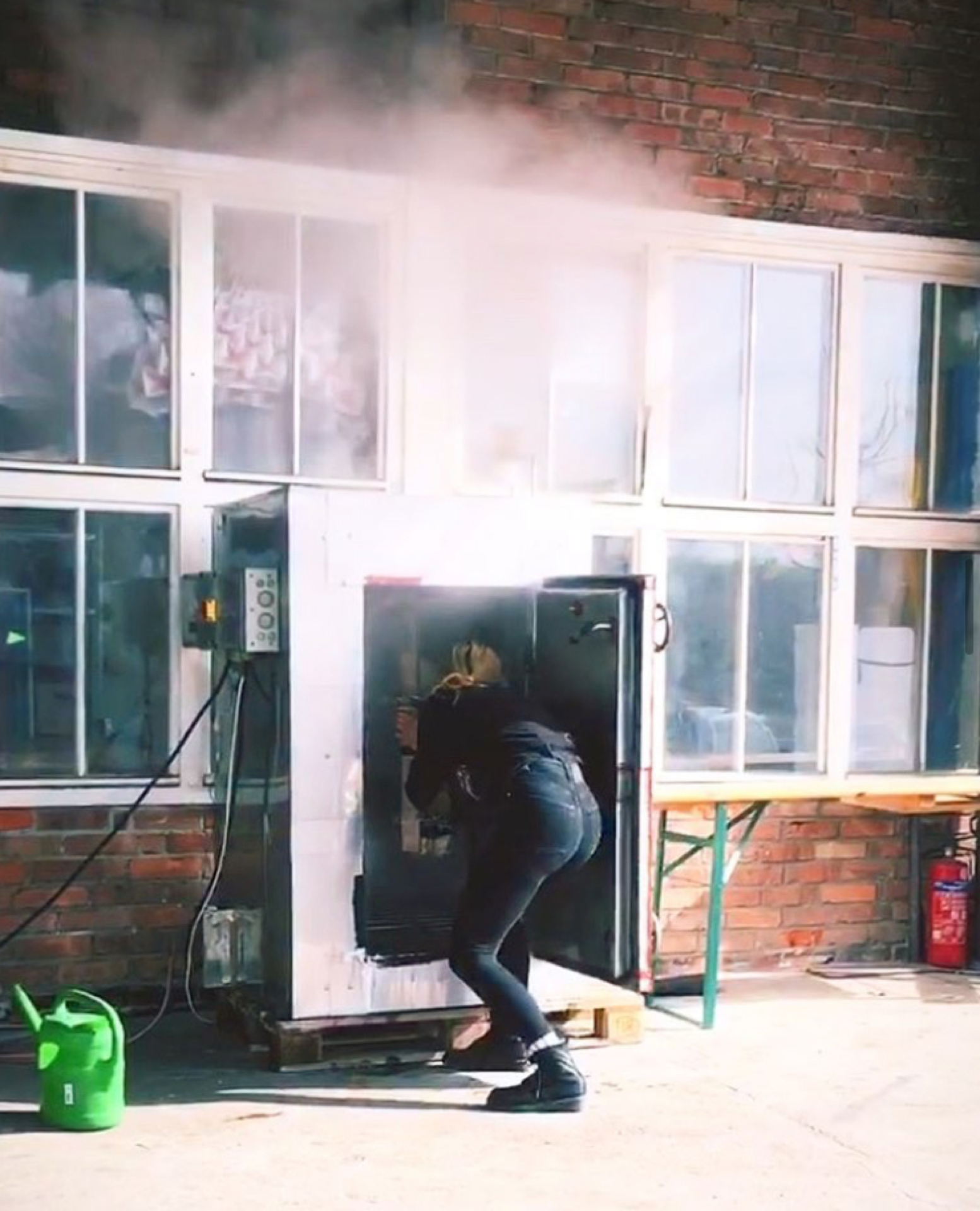
One exciting thing about your work is the new approach to pleating. You have developed a pleated bikini that looks very good when dry. Did you develop a special technique to keep the shape stable when wet?
I haven’t developed a special technique, nor is there a miracle product that I add to make the pleated fabric hold, but there are tricks. It depends a lot on the material, whether you pleat a cotton or a synthetic. What percentage of what is in it all makes a huge difference. With the right material you produce more stable pleats. Each material has its own properties and behaves differently. It’s a separate science that has to be tested. In cold water, there are no problems with the bikini. But in hot water there is, because the wrinkles dissolve again due to heat. That means you shouldn’t wash it too hot, and you shouldn’t go into hot water that is too hot when wearing it.
I reinforce the pleats a little from behind by making small seams to make it tighter. Sometimes I also work with a second layer of material. In short, the bikini, the swimsuit holds super well in the water and it’s doable. But everything has an artistic aspect, and it’s not the most functional garment to go jogging in.
Pleating experience has taught us that only polyester really holds the shape in the long run. But you seem to be able to pleat all different materials, including leather. Do you have a special procedure to make the pleated fabric durable?
Well, as I said, I only have my knowledge as an autodidact. I also combine pleated and unpleated material in different layers. As I said, reinforcing from the back with seams and little ticks also require a lot of craftsmanship. Pleating and then working everything from the back so that every pleat really stands and holds is a lot of work – not suitable for mass production.
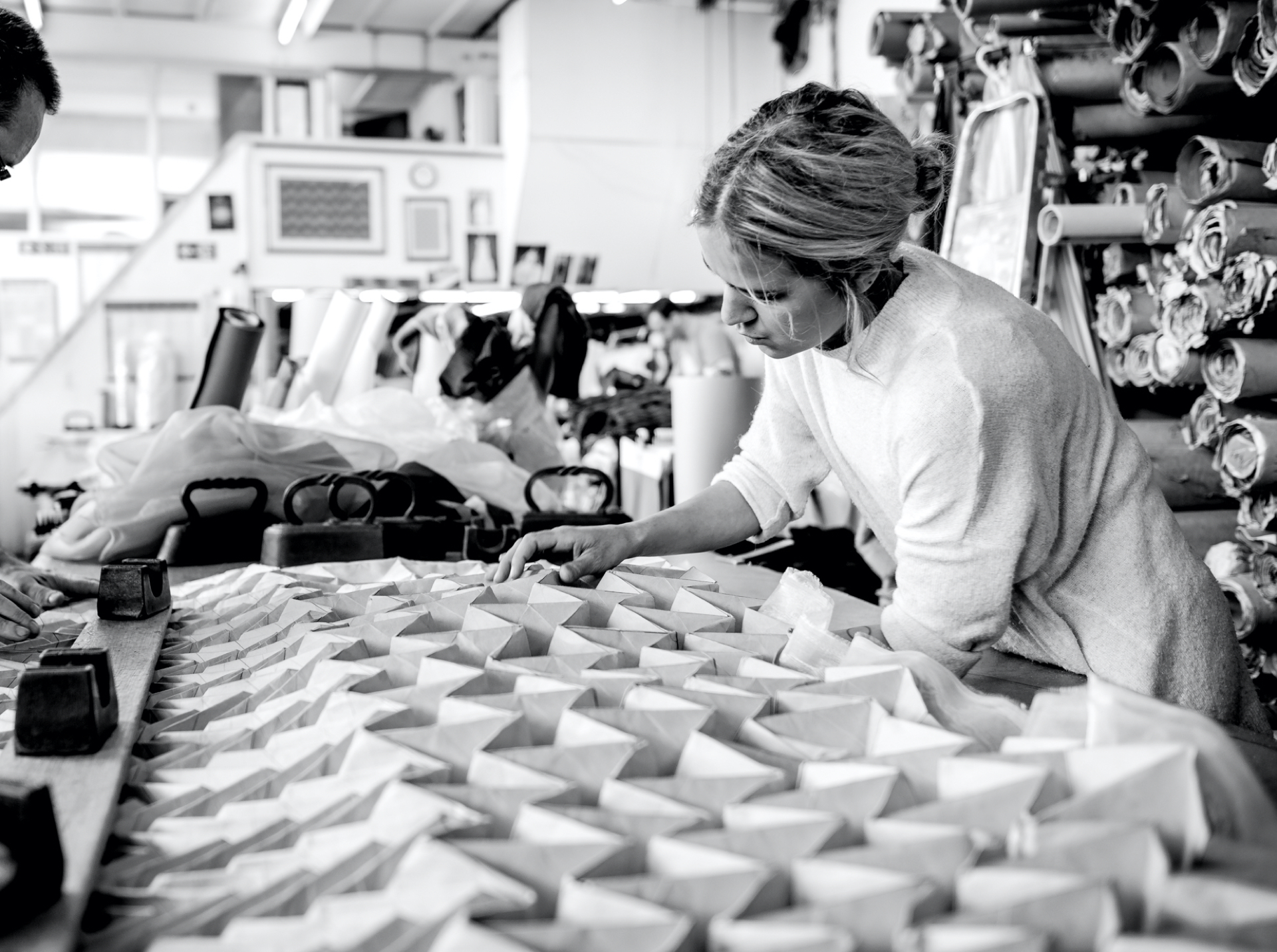
What other materials do you pleat?
Of course polyester. Also silk, leather, felt – real wool felt works very well. Different kinds of plastic, acrylic foils – everything in the plastic area, really. Of course I’ve also pleated metal – not really pleated, but folded. All recycled materials. Yes, there are these “forever wild” truck tarpaulins; I used them as outdoor furniture! In Bali I pleated rice sacks. Yes, it’s endless, and it goes on and on. It’s not at the end yet. I’m on a bit of a break right now, through the lockdown and quarantine period. When I was in Bali I painted more. That’s because my main studio with its steam kiln is in Berlin.
You move with ease between design and art with your designs for fashion, products, installations and painting. How do you create this independence from existing external structures like collection cycles in fashion?
Well, I never was a fashion designer. I never formally studied it. That’s why I don’t have a summer or winter collection. I just create works of art, of which there may be more than one piece – a multiple – but it’s first and foremost a work of art. That means I have a folded dress, there are folded trousers, there is a folded bikini. Always individual pieces. For me it wasn’t important to make a summer collection but rather to figure out how a wrap skirt made of pleats will look. For me it’s interesting to create individual pieces as artworks instead of mass producing them. It also hurts me when I see how much is overproduced without much awareness, without paying attention to how it’s produced, where the fabric comes from, and so on. The mountains of clothes we have – that makes me sad. And yet I enjoy producing and creating clothes. But I want my designs to be celebrated and appreciated, so it’s okay to slow down. Slow fashion down. Make it just a piece of art hanging in the wardrobe. It’s worth so much more.
How do you see the future of pleating?
In my designs, as I have observed little by little, that I worked with structures; then I learned to pleat. Now I work mainly with pleating. For me it’s mega trendy now, or was – especially a few years ago when I really started with it. For me it is timeless. Pleats are everywhere: in plants, animals, wings in space, in everything, especially in technology. Yes, pleats have always been there and that’s why I know they are efficient. When you think about how things are folded small at NASA and then unfolded again in space, and so on. It’s definitely a very exciting field, far away from fashion. I think pleats will never die out, maybe they’ll be reinvented. That’s why the craft of pleating is here to stay and is definitely irreplaceable. There is also 3D printing, of course, which is also exciting. I am very willing to look into it and to learn more. I really like working with my hands, but you can also combine the two. I could also use my hands just to create the prototypes. The future of pleating is endless, like my unfolded universe.
